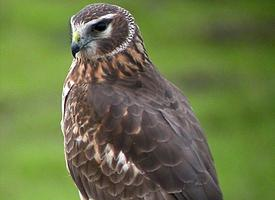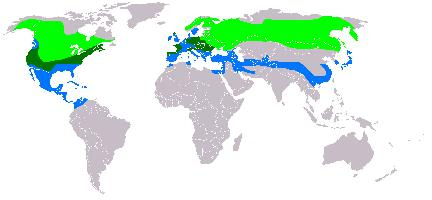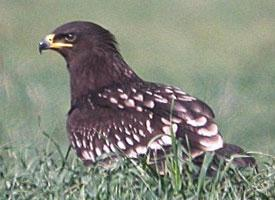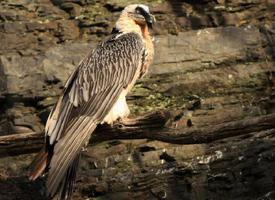
Greutăți și măsuri
| Lungime | 58 cm |
|---|
Starea de conservare
| Amenințat |
Descrierea animalului
The Hen Harrier (Circus cyaneus), also known as the Northern Harrier in North America, is a bird of prey that belongs to the Accipitridae family, which includes hawks, eagles, and kites. This medium-sized raptor is distinguished by its unique hunting method and distinctive physical appearance, making it a fascinating subject of study in the avian world.Physical Description:
The Hen Harrier is notable for its slender body, long wings, and a long tail that gives it a buoyant and graceful flight. Adults typically display sexual dimorphism in their plumage. Males possess a striking gray plumage with black wingtips and a white rump, which is highly visible during flight. Females and juveniles, on the other hand, are predominantly brown with streaked undersides and also have a white rump patch, which serves as a common identifier for the species. Both sexes have a distinctive facial disk, similar to that of owls, which aids in channeling sound to their ears, thereby enhancing their auditory senses for hunting.
Habitat and Distribution:
Hen Harriers inhabit open areas such as marshes, grasslands, and agricultural fields where they can easily spot their prey. They are ground-nesting birds, often choosing dense vegetation for their nests to protect them from predators. The species has a wide geographical range, spanning across parts of Europe, Asia, and North America. While some populations are sedentary, others are migratory, traveling long distances between their breeding and wintering grounds.
Diet and Hunting Behavior:
Hen Harriers are skilled hunters, primarily feeding on small mammals, birds, and occasionally insects. They hunt by flying low over open ground, using their acute hearing and vision to detect prey before swiftly swooping down to capture it. This method of hunting, known as quartering, is characteristic of the species and is a spectacle to behold.
Conservation Status:
The Hen Harrier is considered to be of least concern globally by the International Union for Conservation of Nature (IUCN), although its population is declining in some areas due to habitat loss, changes in agricultural practices, and illegal persecution. Conservation efforts are underway in various regions to protect their habitats and mitigate threats to ensure the survival of this remarkable bird of prey.
Breeding:
The breeding season for Hen Harriers is a time of elaborate courtship displays, with males performing impressive aerial maneuvers known as "skydancing" to attract females. They are polygynous, with males potentially mating with several females who each build their nest within the male's territory. The female is primarily responsible for incubation and caring for the chicks, while the male provides food.
In summary, the Hen Harrier is a captivating bird of prey with distinctive features and behaviors. Its presence across diverse landscapes highlights the adaptability of this species, yet also underscores the importance of concerted conservation efforts to address the challenges it faces in various parts of its range.
Harta răspândirii

Animale similare
Fotografii noi cu animale
Top 10 animale
- Dolphin gull (Leucophaeus scoresbii)
- Diana monkey (Cercopithecus diana)
- Moustached guenon (Cercopithecus cephus)
- Stone loach (Barbatula barbatula)
- Greek tortoise (Testudo graeca)
- Galápagos tortoise (Geochelone nigra complex)
- Japanese macaque (Macaca fuscata)
- Russian tortoise (Testudo horsfieldii)
- Common flying dragon (Draco volans)
- Galápagos penguin (Spheniscus mendiculus)


